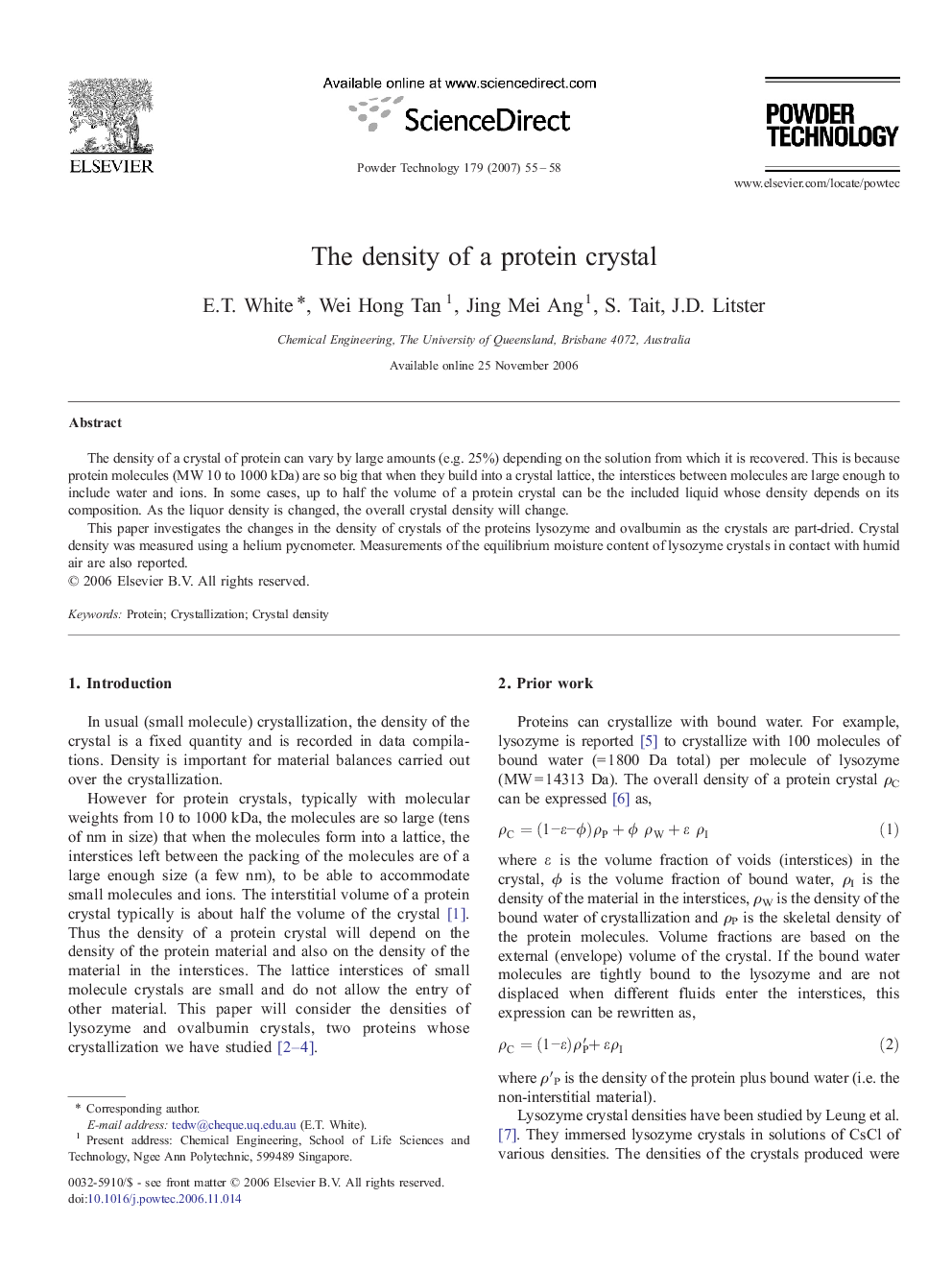| Article ID | Journal | Published Year | Pages | File Type |
|---|---|---|---|---|
| 239026 | Powder Technology | 2007 | 4 Pages |
The density of a crystal of protein can vary by large amounts (e.g. 25%) depending on the solution from which it is recovered. This is because protein molecules (MW 10 to 1000 kDa) are so big that when they build into a crystal lattice, the interstices between molecules are large enough to include water and ions. In some cases, up to half the volume of a protein crystal can be the included liquid whose density depends on its composition. As the liquor density is changed, the overall crystal density will change.This paper investigates the changes in the density of crystals of the proteins lysozyme and ovalbumin as the crystals are part-dried. Crystal density was measured using a helium pycnometer. Measurements of the equilibrium moisture content of lysozyme crystals in contact with humid air are also reported.
Graphical abstractProtein molecules are so large that when they build into a crystal lattice the interstices between the molecules are large enough to include water molecules and ions. Thus the overall density will depend on the material included in the interstices. The figure shows the change in the specific volume of lysozyme crystals as the crystal is dried (water in the lattice interstices replaced by air).Figure optionsDownload full-size imageDownload as PowerPoint slide
